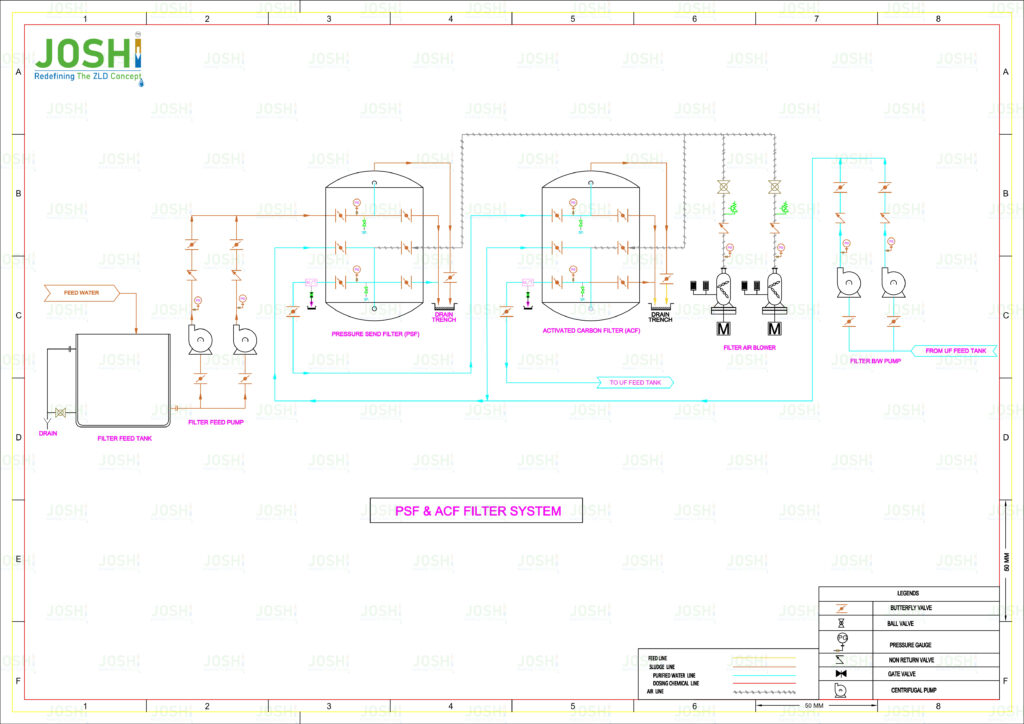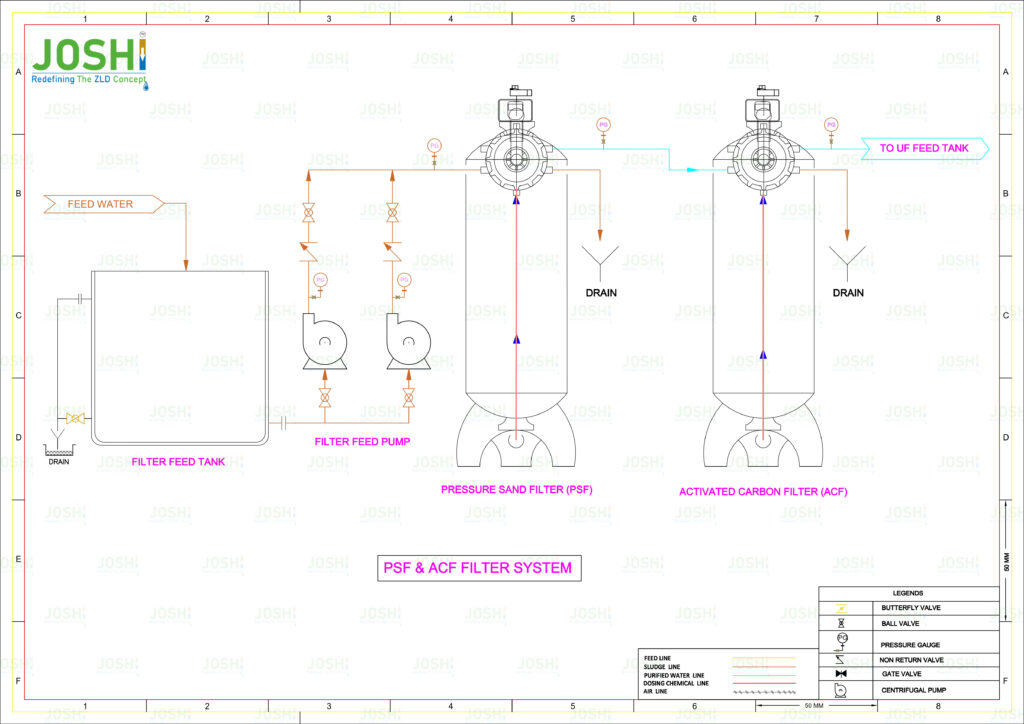ACF - Activated Carbon Filter
An activated carbon filter is a widely used water treatment technology that utilizes activated carbon to remove various contaminants from water. It is effective in reducing organic compounds, chlorine, certain chemicals, odors, and tastes, making it a popular choice for improving the taste and quality of water in residential, commercial, and industrial applications.
Process Description
Adsorption : Water enters the filter housing and passes through a bed of activated carbon. As the water flows through the carbon bed, organic compounds, chlorine, chemicals, and other impurities are adsorbed onto the carbon surface. The activated carbon’s porous structure and large surface area provide a high capacity for adsorbing contaminants.
Contaminant Removal : The activated carbon filter can effectively remove a wide range of contaminants, including residual chlorine, chloramines, pesticides, herbicides, industrial solvents, volatile organic compounds (VOCs), and certain taste and odor compounds. The contaminants adhere to the carbon surface, trapping them within the filter media.
Filtration Capacity : The adsorption capacity of activated carbon is limited, and over time, the filter media becomes saturated with adsorbed contaminants. As a result, the filter’s performance gradually declines, and it needs to be replaced or regenerated.
Maintenance and Replacement : The maintenance of activated carbon filters typically involves periodic monitoring and replacement of the filter media. The frequency of replacement depends on the water quality, usage, and the specific type and size of the filter system. Manufacturers usually provide guidelines on the recommended service life and replacement intervals for their activated carbon filters.
Activated carbon filters come in various forms, including granular activated carbon (GAC) filters and carbon block filters. GAC filters contain loose granules of activated carbon, while carbon block filters have compressed carbon blocks. Both types are effective in adsorbing contaminants, but carbon block filters generally provide better contact time between water and carbon, resulting in improved filtration efficiency.
System Components
Activated carbon is a highly porous form of carbon with a large surface area. Its structure provides numerous adsorption sites where contaminants can bind to the carbon surface. When water passes through an activated carbon filter, the contaminants in the water come into contact with the activated carbon, and the adsorption process occurs.
Targeted Impurities
- Dissolved gases
- volatile organic compounds (VOCs)
- chlorine
- hydrogen sulfide
- Odor
- COD
- Color






